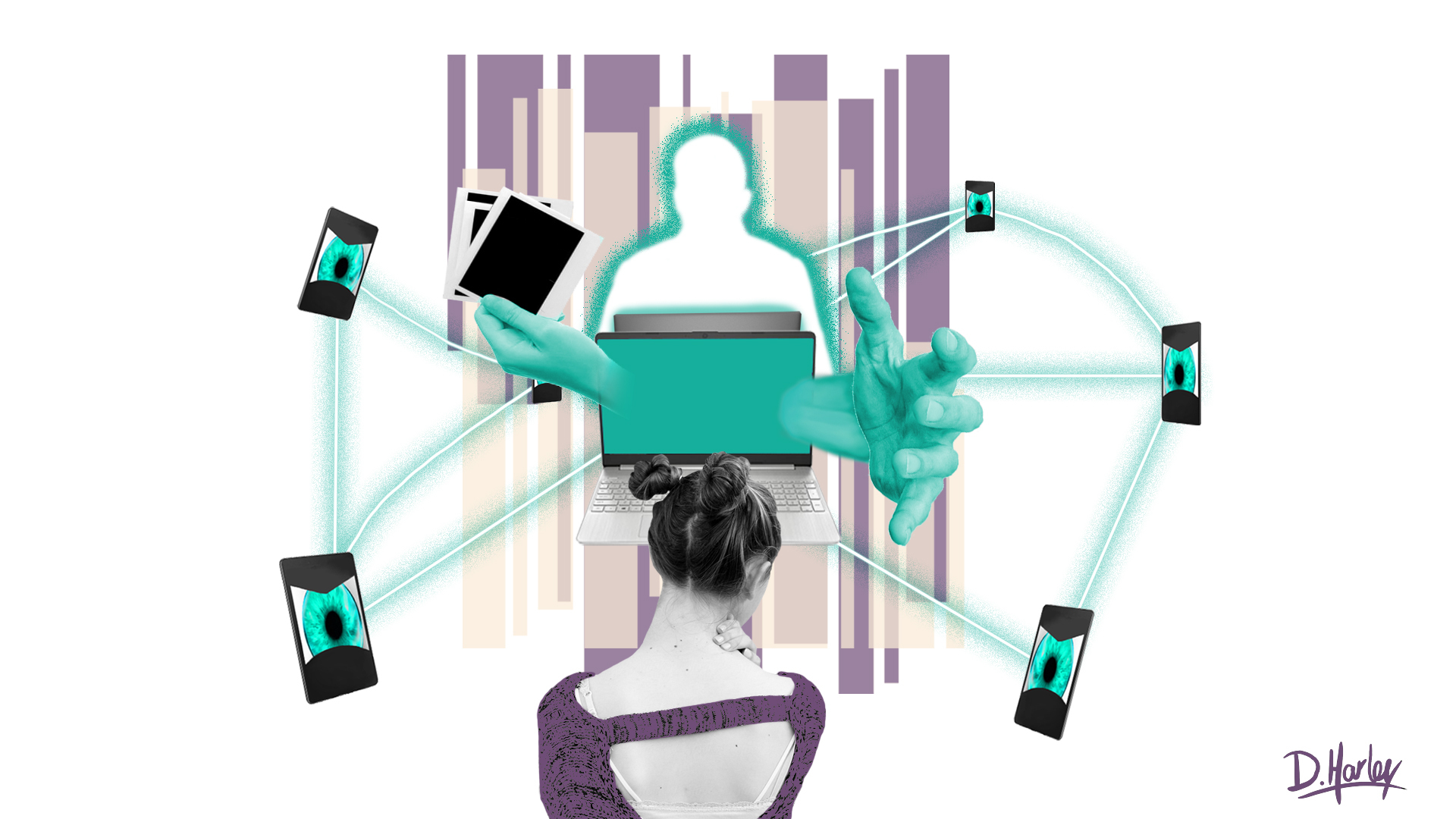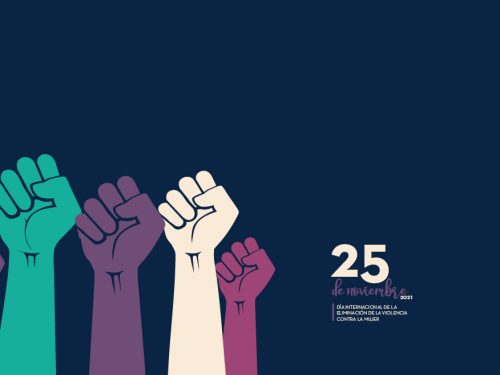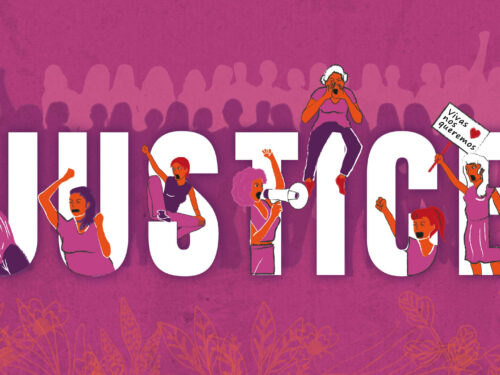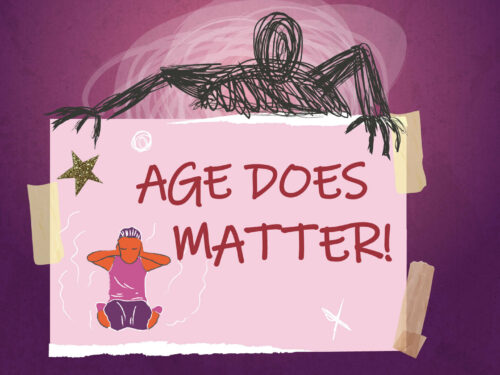
When Jimena was 14 years old, she wanted to disappear from the world. She was in eighth grade and while she was learning about linear equations, a photo of her and a friend the same age in bathing suits was circulating in her community on several social networks. There, adult men and strangers shared the photo as if it were pornography and called her “easy” and “dirty.”
At that time, she didn’t quite understand that some people could pervert an innocent photo. It made her feel like she wasn’t a person, but rather an object. Although it isn’t the only time in her life that she has felt this way, eight years later, that memory still breaks her spirit.
I was alone, I was a girl and no one protected me,” said the young woman from Puntarenas, who is now 22.
As internet access has grown in Costa Rica in recent years, people who practice gender violence used the platforms to attack women, and especially minors, in a new way. Sexual cyberviolence against minors, such as harassment and the distribution of photos, is a problem that puts the quality of life of girls and teenagers in the country at risk.
Having, modifying and disseminating intimate photos of someone else without their consent is a form of sexual violence. It’s also a crime in Costa Rica, according to article 196 of the country’s penal code, which classifies it as a “violation of personal data.” The aggressor can be sentenced to up to four years in prison.
The distribution or possession of intimate photos of minors is punishable by law as child pornography. The abuser can be penalized with up to eight years in prison, regardless of whether that person is also a minor.
It’s Not a Mistake; It’s Sexual Violence
Girls and teenagers are among the groups most susceptible to suffering from sexual violence on virtual platforms, affirmed the executive director of the Paniamor Foundation, Oscar Valverde.
On social networks, underage girls are also more vulnerable to experiencing sexual harassment, sexual blackmail, improper relationships and can even be deceived by false profiles set up by groups dedicated to sexual exploitation.
In 2019 alone, 249 women reported to the judiciary that they were victims of dissemination of their intimate photos. In 2020, the figure was 147 complainants, according to data from the institution.
At that time, Jimena didn’t file a legal report about what happened to her and she didn’t tell her parents either, because she didn’t trust that they would understand what she was going through. She carried the pain and mourned the abuse alone.
My dad had already called me easy a year or two before because my boyfriend kissed me in a hallway at school. He had also mentioned how our value as women loses value with ‘use’ just like ‘cars,’” she recalled.
Mourning Over sexual cyberviolence
Fernanda Membreño also experienced sexual violence online at the age of 17. When she was in 11th grade at a private high school in Heredia, she sent intimate photographs to a boy who was one of her closest friends. Days later, Fernanda discovered that her friend had a Facebook group called “Calles de Membreño” (Streets of Membreño), where he had been sharing her nude photos for years with 10 other people from the school. The group had photos of her since she was 14 years old.
I felt super bad. I felt super used. They were people I saw as my friends and they betrayed my trust. They didn’t have respect for me in the least,” the young woman, who is now 25 years old, said.
Reach Out, an Australian center for mental health and resilience for young people, stresses that it is never the victim’s fault that someone else distributes their intimate photos. It’s a matter of consent: the victim consented to send the photos for someone else to see, but did not consent to that someone else distributing or using them for other purposes.
No one at school supported her emotionally or sanctioned her abusers, even though, according to her, the school teachers knew what happened. The situation was swept “under the rug” and she had to continue studying with members of the group until she graduated.
Elementary and high schools in Costa Rica don’t have a protocol to prevent this type of crime or help girls who are victims, explained Ana Karen Cortes, feminist activist and former director of the Agency for the Protection of Inhabitants’ Data (ProdHab for the Spanish acronym).
Unfortunately, there are few tools in the country to empower our girls with digital education and digital rights. That’s why people don’t know that these types of cases are reportable and adults also don’t know how to take care of the victim and so they just ignore it,” the expert affirmed.
The judiciary branch has multiple categories for criminally prosecuting people who commit different types of digital sexual violence, such as seduction or meeting up with minors by electronic means and attempted sexual abuse, for example if someone threatens to rape or abuse a minor on social networks.
However, according to Cortes, young women don’t know that these processes exist nor do they understand the mechanisms for filing complaints.
Another of the biggest problems that the expert explained is anonymity. Members of these groups don’t all necessarily present their real identity when participating in these platforms. Without an identity, it takes the law longer to convict people of these crimes.
Men Who Masquerade to commit sexual cyberviolence
The executive director of the Paniamor Foundation, Oscar Valverde, explained that another of the most common virtual sexual crimes is called grooming. This term means “sexual harassment of minors by a legal adult through digital means, principally through chats and social networks,” according to the Royal Spanish Academy.
Cristy lived through it when she was 15, more than ten years ago. Back then, her brother’s best friend, who was 20, got her phone number. At first the messages were casual, but soon he began to ask her if she was masturbating yet or if he could send her sexual photos to “help” her do it.
For years, he kept writing to her, asking her if he can send her pornographic videos or asking about masturbation. When she had a boyfriend a year later, he wrote to ask if her boyfriend “satisfied her enough.”
The fear of online harassment goes beyond that scope. Cristy had to see him at her family’s home and at the church that they both attended.
The trauma returned this year when that person replied to a story on Instagram with sexual overtones. “I remembered everything he did and I died of disgust,” said the young woman from San Jose.
Since then, she’s been having nightmares and her anxiety has increased. Although she said that when she was a teenager, she didn’t understand the scope of what was happening to her, years later, she knows that she experienced an abusive situation and that this person took advantage of her age to hurt her.
“Now I’m aware of how bad that was and it makes me want to go and hug myself when I was little and explain to myself how bad that was,” she commented.
Grooming is classified in Costa Rica as “seduction or meeting minors by electronic means” and the law penalizes it with up to three years in prison. Although Cristy’s case involves someone she knows, the crime is even more dangerous when abusers create fake profiles on social networks just to seek out minors.
“Criminals make profiles on places that they know are used by minors, like Instagram or TikTok, and they start to establish an interaction with them. Acting with that profile that they built, they look for personal information and can even lead to the crime of trafficking,” said Valverde.
Although Cristy reported her abuser to her family years later, her brother ignored her story and continued his friendship with the abuser. Cristy currently has a support network with women from her family and friends who are helping her overcome the case.
“Nowadays, it’s still super difficult for me to talk about this with anyone,” she said now at the age of 28.
Education Is Key to Prevention
One thing all three stories have in common is that the victims didn’t trust their parents and responsible adults at the time. Also none of them were able to report it since they didn’t know about procedures to do so.
The data protection expert, Ana Karen Cortes, affirmed that schools in Costa Rica should teach minors about digital security and the procedures available to defend themselves against these crimes. She and Valverde also point out the need to raise awareness among minors so that they don’t commit these crimes.
[They should] reform the curriculum so that, in some way, boys and girls can have a complete digital education. We didn’t receive this, but the children that are coming are born with the Internet. They have to know their rights and duties on the internet too,” said the expert.
Minor boys and girls aren’t the only ones who have this responsibility. Valverde believes that adults need to give constant comprehensive care to the children and teenagers who are in their charge since this type of crime makes victims feel that they “have nowhere to go.” The director recommended that parents have empathetic conversations with their daughters and sons about these subjects, where they don’t feel that they are being judged or penalized.
Even an adult woman has more resources to get out of a situation of violence than an adolescent. [Underage girls] are at a stage of development that makes it difficult for them to get out without help because there is not only economic but emotional dependence on their parents or guardians. So it’s the responsibility of the adult to help them,” explained the psychologist.
Fernanda, Cristy and Jimena continue trying to overcome the abuse that marked their adolescence. The three, without knowing each other, say that they are telling their stories to process that what happened to them was a crime and to help other teenagers who read this. Or as Fernanda put it, “so that they read the story and know that they aren’t alone.”
*The Voice of Guanacaste changed the names of some of the victims that appear in this investigative report at their request.







Comments